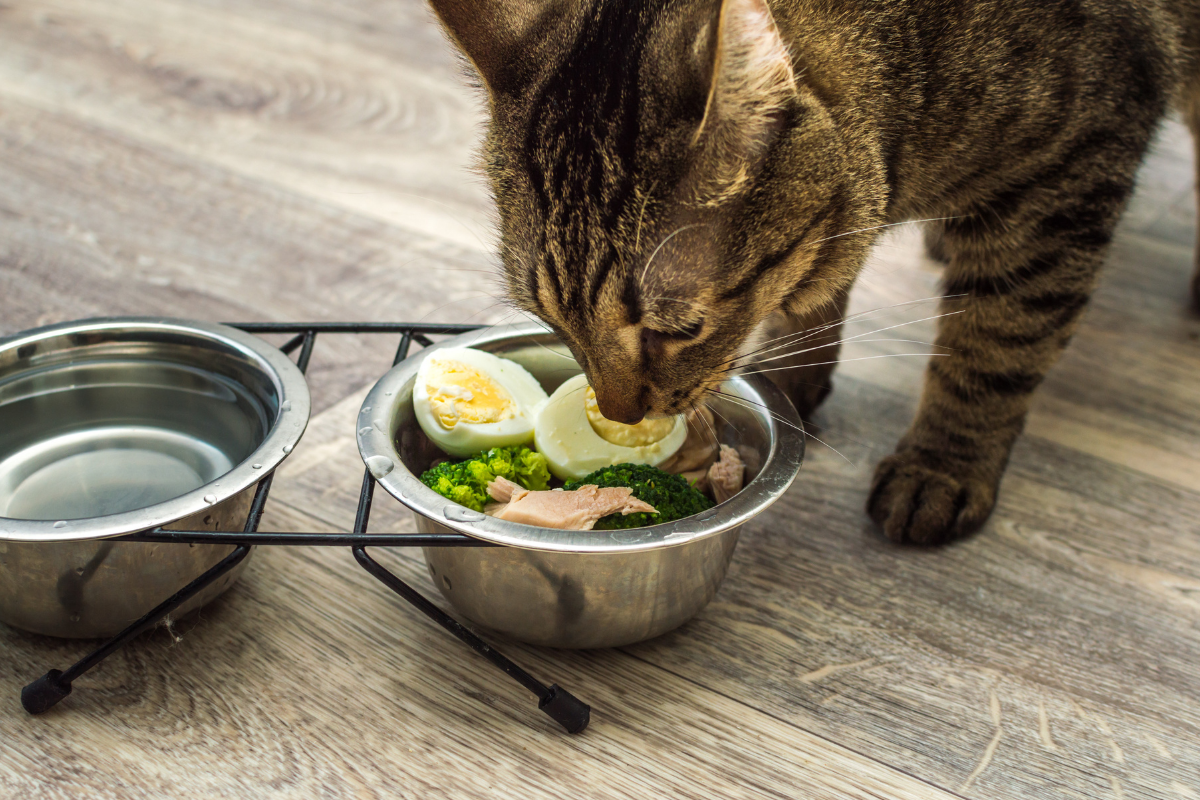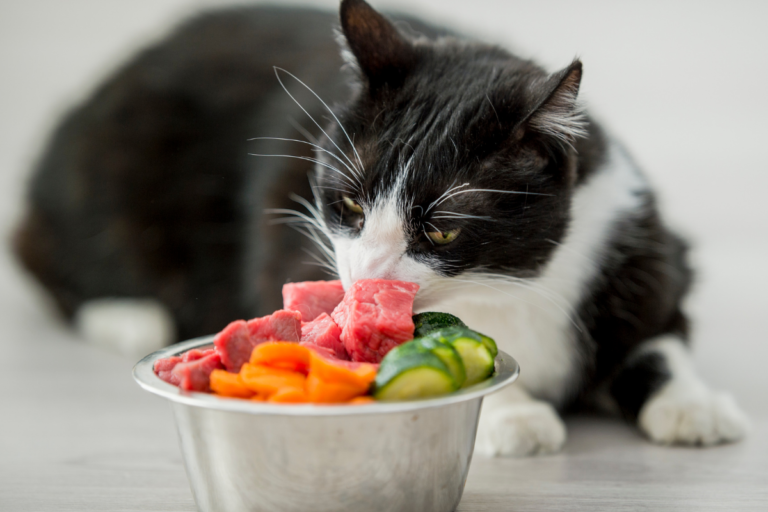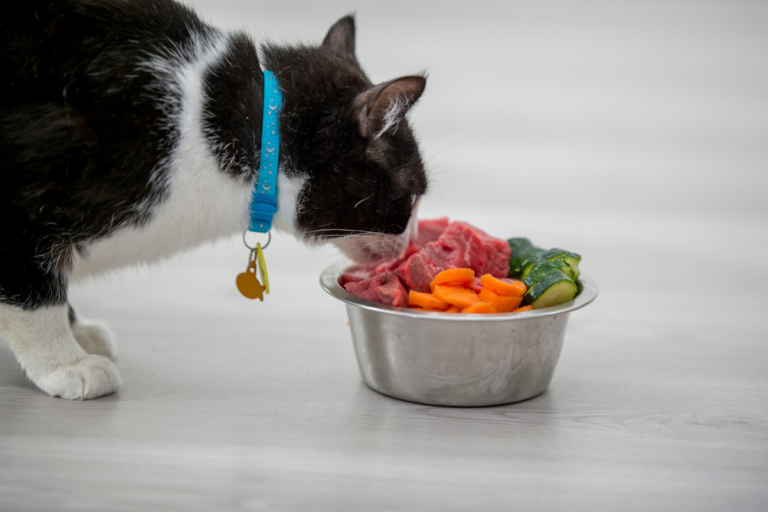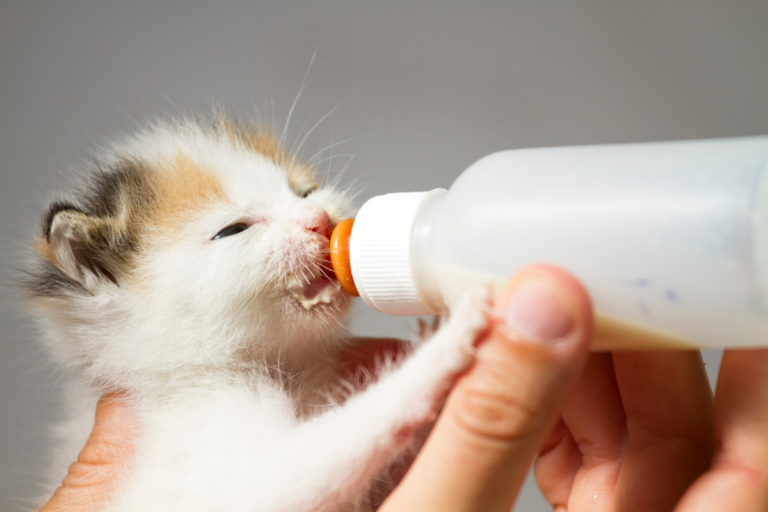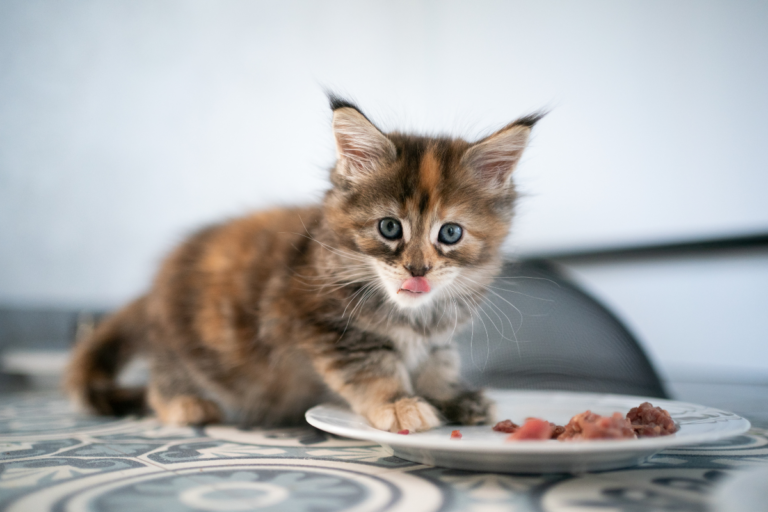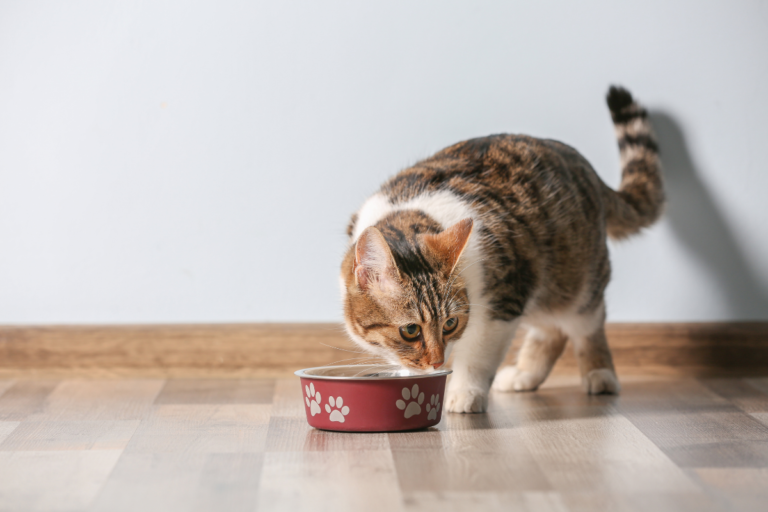Meow-tastic Nutrition: Meeting Your Cat Diet Requirements
Understanding Cat Nutrition
Cat’s Unique Dietary Needs
When feeding your furry buddy, it’s key to remember that cats are true meat lovers, or obligate carnivores. They thrive on a diet rich in animal-based proteins. You might have heard that cats need some special building blocks, like Amino acids such as Arginine, Lysine, and the all-important Taurine. These nutrients are best munchable through meat and animal goodies.
Think of your cat’s diet like this: they need lots of protein, some fat, and basically no carbs. Their bodies aren’t good at dealing with veggies, so break out the tasty meats! Here’s the scoop:
| Nutrient Type | Importance |
|---|---|
| Protein | Loads; keeps muscles strong and healthy |
| Fat | Some; gives them energy and keeps their skin in check |
| Carbs | Hardly any; they’re mostly a no-no |
| Vitamins & Minerals | Needed; for the body to run smoothly |
| Amino Acids | Musts; they help with bodily functions |
Want more info? Check out our article on cat nutrition happenings.
Importance of Quality Nutrition
Getting your cat the good stuff food-wise isn’t just nice—it’s crucial for them living their best nine lives. A diet in line with what they need keeps them full of pep and vigor.
Don’t go overboard on treats—just 10-15% of what they eat should be goodies. Steer clear of raw meat, fish from your own pantry, and milk, as those can spell trouble for their health (we’re talking infections and stomach upsets).
A solid diet offers:
- Animal-based proteins: Vital for muscle and health.
- Crucial amino acids: Like Taurine and Arginine, for staying fit.
- Fatty acids: Keeping that coat shiny and skin healthy.
- Vitamins and minerals: Essential for proper function.
For those little kittens or wise seniors, we’ve got more on feeding them right with our kitten food tips and older cat diet advice.
Making sure your kitty gets top-notch nutrition can mean the difference between “meh” and marvelous health. Dig into our section on must-have cat nutrients for the full lowdown.
Need advice specific to your cat’s life stage, like bottle-feeding kittens or keeping weight in check? We’ve got more reads for you!
Essential Nutrients for Cats
I’m always on a mission to make sure my kitty is the picture of health. Trust me, cats aren’t just small dogs with twitchy noses and ball-of-yarn ambitions. They’re totally unique and have some pretty particular dietary needs. Here’s what I’ve learned about keeping them healthy and purring.
Proteins in Cat’s Diet
Cats are the ultimate meat-lovers. No broccoli smoothies for them—it’s all about that protein! Whether it’s steak, chicken, or fish, this stuff helps my furry companion grow strong muscles, shining fur, and healthy skin. If you’re curious, the AAFCO has some nerdy but useful info: adult cat food needs at least 26% protein, and if they’re young and frisky (or up to some kitten-making), they need around 30%.
| Cat Life Stage | Protein Requirement (%) |
|---|---|
| Adult Maintenance | 26 |
| Growth and Reproduction | 30 |
Role of Amino Acids
So, proteins are like Lego blocks, and amino acids are those sticky little connectors. There are 11 of these bad boys every cat simply can’t live without. Taurine is a biggie—it keeps their eyesight sharp and hearts beating strong. Miss any of these essential amino acids and you could have one grumpy or unhealthy cat on your hands.
Here’s the amino acid lineup my cat can’t skip:
- Arginine
- Lysine
- Taurine
- Histidine
- Isoleucine
- Leucine
- Methionine
- Phenylalanine
- Threonine
- Tryptophan
- Valine
Essential Minerals for Cats
Minerals are the behind-the-scenes heroes in my cat’s daily routine. Picture calcium and phosphorus as the dynamic duo for bone health, while potassium is keeping those kitty nerves sharp and muscles flexing. Your pet’s diet needs these to keep everything ticking just right.
Key minerals and their roles:
- Calcium: The bone cheerleader for growth and maintenance.
- Phosphorus: Calcium’s sidekick for solid bones.
- Potassium: Helps nerves and muscles play nice.
If you’re eager to decode what makes a balanced diet for cats, take a gander at our resources on cat nutrition requirements. Whether you’re feeding a hyper kitten or a laid-back senior kitty, knowing these basics keeps your feline friend feeling their best. Want the inside scoop on more personalized meal plans? Dive into our kitten diet plan and senior diet for cats.
Designing a Balanced Cat Diet
So, I’ve got my furry diva at home, which means I’ve got to whip up a diet plan that keeps them purring and not plotting! Let me break down what it means to serve up some balanced meals for my pampered kitty, including the low-down on store-bought food, the wet and dry showdown, and how to handle their eating schedule with grace.
Commercial Cat Food
Don’t let those fancy labels fool ya! Store-bought kitty grub’s packed to cater to their needs. Choices abound: dry kibbles, halfway-moist munchies, or the ultimate delight, canned goodies. Top-notch brands ensure their formulas tick all the right boxes for kitty nutrition.
| Type | Moisture | Protein Punch | Calorie Count | Taste | Digestion |
|---|---|---|---|---|---|
| Dry | Bare minimum at 10-12% | So-so | High score | Not so tempting | Moderate digestibility |
| Semi-Moist | Juicier at 15-30% | Moderate to high | Just right | Better on taste | Middling digestion |
| Canned | Waterfall at 75-78% | Off the charts | Easy on the calories | Pow! Great taste | Easy-peasy digestion |
Choosing wisely is essential for kitty’s health and happiness. Oh, by the way, we’ve got more on this in the cat nutrition breakdown link.
Wet vs. Dry Cat Food
Picking between wet n’ dry? It’s kind of like picking between water and dirt, both have their reasons. Let me spill the beans:
| What’s Better | Wet Food | Dry Food |
|---|---|---|
| Thirst Quencher | Got loads of water | Barely wets the tongue |
| Taste Factor | Hits the taste jackpot | Meh, more like cardboard |
| Handy or Hassle | Fridge-bound after opening | Easy-peasy leave-it-out |
| Costly? | Can pinch a bit | Wallet-friendly |
Honestly, wet food seems tastier and good for hydration, plus keeps kitty glowing. Dry has its perks, especially for lazy feeders like me. Mixing it up keeps the belly happy and the wallet happier.
Meal Feeding vs. Free-choice Feeding
Meal times or buffet-style grazing? It’s like setting a routine or living on the edge.
-
Meal Feeding: A strict timetable serving up bites like clockwork. Keeps portions in check and lets me monitor munching. Great for seniors, weight-watchers, and those with special needs—more on that senior kitty menu.
-
Free-choice Feeding: Fill ‘n forget mode, perfect for grazing lovers and multiple cats under one roof. Careful though, could transform my fluffball into a fluffmountain if I’m not watchful.
Whether I choose scheduled meals or all-you-can-eat depends on kitty’s quirks and my scramble. For tailored kitty diets, like kitten meal ideas or shedding pounds, I’m ready to roll.
Serving up the right mix of shop-bought chow and feeding styles keeps the whiskers twitching and the tummy rumbling in satisfaction. Need more hot tips? Hop over to our page: how to feed right.
Figuring Out What Your Cat Should Eat
I get it—being a cat owner means you’re basically their personal chef, nutritionist, and best friend. Cats, like people, have different grub needs depending on where they’re at in life. So, let’s dig into what kittens, senior felines, and cats needing a diet plan might need on their menu.
Feeding the Young Whippersnappers
Kittens are busy little fuzzballs, growing like crazy, which means they need a diet jam-packed with protein and fats. When my little rascal hit around 8 weeks, I was feeding them up to 5 times daily! By the 6-month mark, we cut down to a couple meals a day.
The go-to? A special kitten chow loaded with stuff like omega-3, DHA, and a vitamin cocktail to keep their immune system firing on all cylinders. Peep my kitten diet plan for the nitty-gritty on how I kept my kitten thriving.
| Age (Months) | Meals per Day |
|---|---|
| 0-2 | 5 |
| 3-6 | 3-4 |
| 6+ | 2 |
Dining with the Golden Oldies
Once my kitty hit the twilight years (like 8-10 human years, not cat years!), it was time to tweak their food lineup. Older cats need help with joints, kidneys, and just keeping them sprightly. This means good proteins, some fats, and fibers to aid digestion.
Keeping tabs on my senior cat’s weight and diet keeps them feeling feisty. Plus, I’ve added more wet cat food to make sure they’re hydrated happy campers. Tap into my guide on the senior diet for cats for all the details.
Watching the Waistline
If your kitty’s living indoors lounging around, like mine, then the battle against kitty love handles is real. Too many treats and not enough movin’ can pack on the pounds. Here’s our game plan: high protein and low carbs! Keeps their muscles and sheds the extra fluff.
Regular dinner portions and ditching that open-buffet style feeding can stop the kibble bingeing. Take a look at my journey of weight management for cats to get the full scoop.
| Considerations | Details |
|---|---|
| Feed Type | High Protein, Low Carb |
| Feeding Method | Meal Feeding |
| Activity Level | Moderate Exercise |
By crafting a menu that fits each stage of my cat’s life, I’m making sure they stick around with me healthy as a horse—or should I say, cat!
